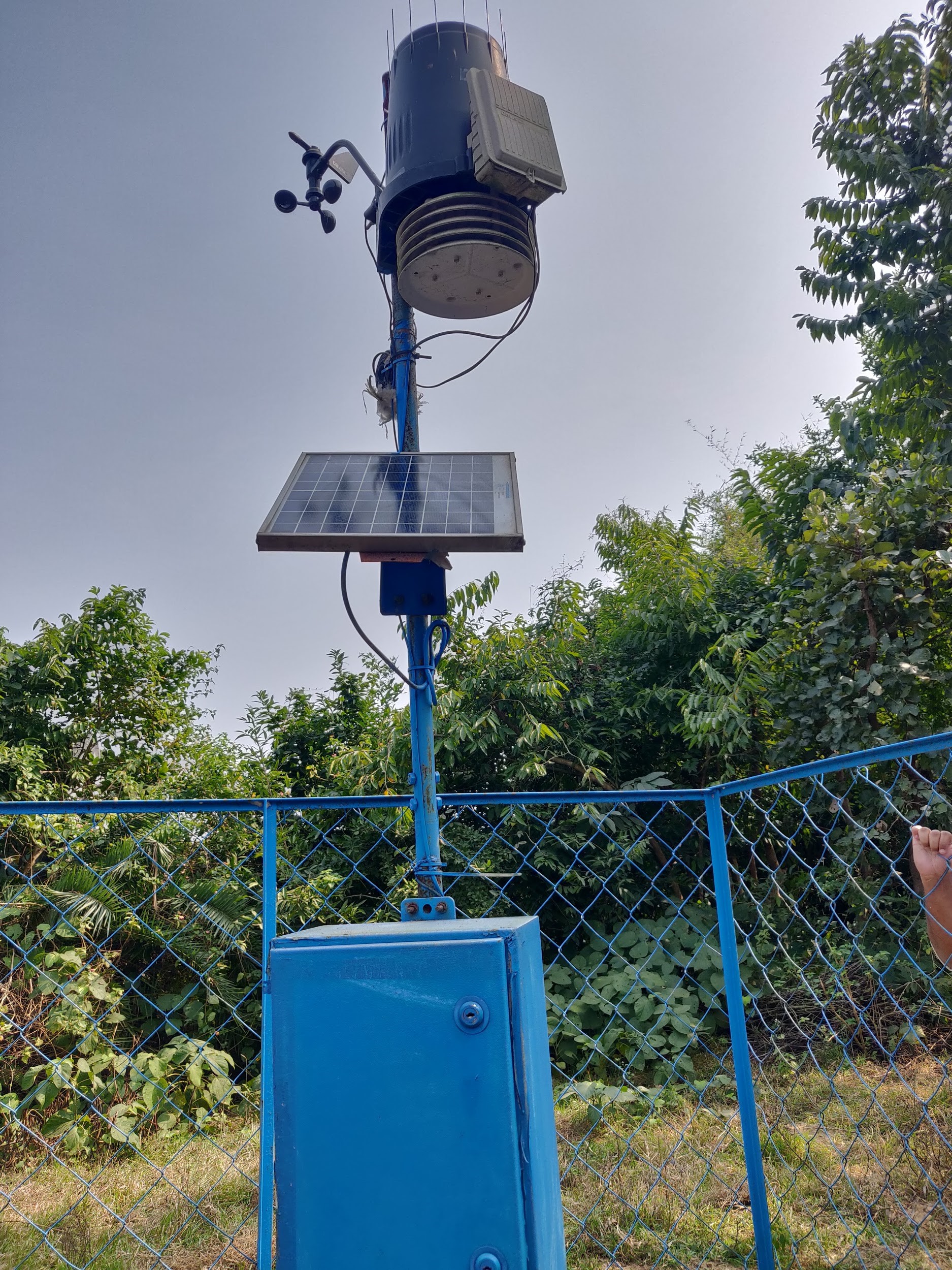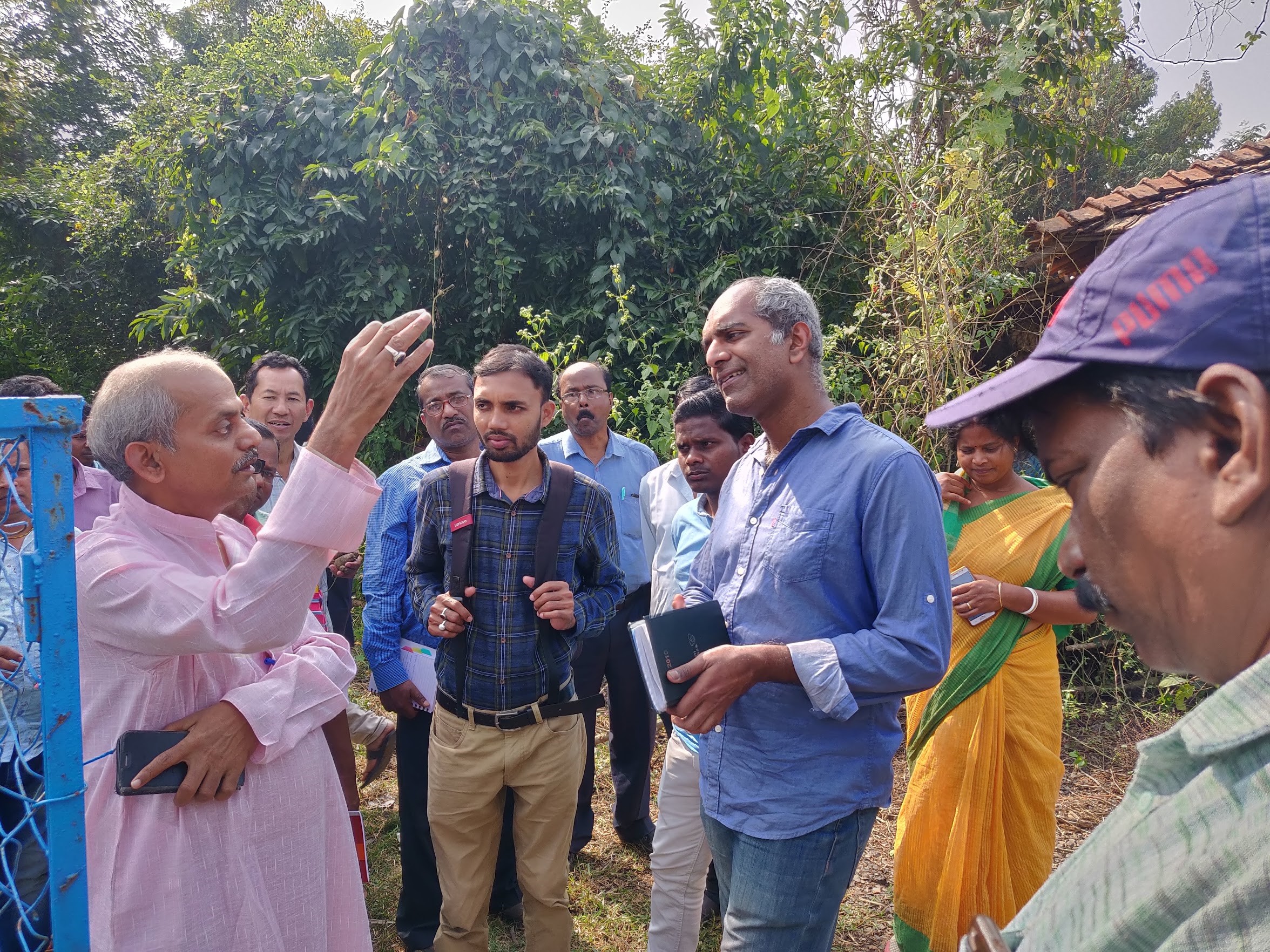Can micro-automatic weather stations enhance lives and livelihoods of rural communities in India?
FeatureBy Joseph Kalassery
18 December 2019

Topography of Indravati region, where the Micro Automatic Weather Station project is proposed to begin. Photograph by Ajaya Behera.
India, with its varied topography and climate — from tropical in the south to temperate in the north and heavy snowfall in the northern echelons — poses significant challenges for weather forecasters. Until a few years ago, India, considered to be seriously deficient in its forecasting infrastructure, had only the 140-year-old India Meteorological Department (IMD) to rely on for weather data. However, the organisation’s tardy monsoonal forecasts have had ramifications for the agriculture sector and other businesses and created a need for better weather prediction. The increased importance of weather and climate to society and commerce around the world is creating a burgeoning need for superior services and locally forecasted weather.
Private companies offer better weather prediction services
Companies like Skymet, Express Weather, Weather Risk and a slew of other smaller players come into play to fill this lacuna. They are not only offering more accurate weather predictions but also releasing data more frequently and faster. They are buttressed by an ensemble cast of meteorologists, scientists, programmers and developers. They also have the infrastructure and systems wherewithal like automatic weather stations, which can measure temperature, humidity, wind speed, wind direction and rainfall accurately every hour. Such system capabilities that help transmit data speedily to computers via cable or satellite give the organisations a definite edge over the IMD.
 A micro-Automatic Weather Station device installed in Purulia district of West Bengal. Photograph by Aravind A.R.
A micro-Automatic Weather Station device installed in Purulia district of West Bengal. Photograph by Aravind A.R.
What are Automatic Weather Stations?
A weather station is a facility, either on land or sea, with instruments and equipment for measuring atmospheric conditions. It provides information to forecast the weather and study climate changes and weather patterns. They measure temperature, atmospheric pressure, and humidity; wind speed, wind direction and soil moisture; and precipitation amounts. With a Manual Weather Station, observations are taken at least once daily.
An Automatic Weather Station (AWS) is an automated version of the traditional weather station. It enables measurements at shorter intervals from remote areas and/or save human labour. An AWS will typically consist of a weather-proof enclosure containing the data logger, rechargeable battery, telemetry (optional) and the meteorological sensors with an attached solar panel or wind turbine and mounted upon a mast. The specific configuration may vary due to the purpose of the system. The system may report in near real-time or save the data for later recovery.
In the past, automatic weather stations were often placed where electricity and communication lines were available. Today, the solar panel and mobile phone technologies have made it possible to have wireless micro-AWS (mAWS) that are not connected to the electrical grid or hard-line telecommunications network. Overall, progress in technology today enables real-time data collection directly from compact geography. This is as compared to in the past, where macro-level data (for instance, at the block level) was assumed to reflect the local weather conditions such as at the panchayat level.

A DRSC staff explaining how a micro-Automatic Weather Station works to the Gram Vikas team. Photograph by Aravind A.R.
The West Bengal experience in deploying mAWS
Development Research Communication and Services Centre (DRSC) is a non-profit resource centre working in 11 districts of West Bengal to collect, collate and disseminate knowledge and skills on sustainable agriculture and alternative livelihoods. DRSC has set up mAWS in two districts, Purulia and Bankura, in West Bengal.
The mAWS operate on a 40 Watt solar panel in these districts. These stations predict weather five days in advance based on which, and in consultation with a climatologist, crop advisory is issued to farmers of these districts. These near accurate weather predictions are based on five climatic variables like rainfall, temperature, humidity, wind speed and pressure. The devices can be placed in remote areas and predictions are based on data collected from an area of 10 square kilometres.
There are two ways of operating the mAWS device. The SDC (Secure Digital Card) based method requires a data analyst to retrieve the data from the device daily, download this data to his laptop in a network coverage area, and share it with a climatologist. The climatologist then sends the weather advisory based on the data received. The second method is to use the device operating on a GPRS (General Packet Radio Services) network. Here, information is automatically transmitted, every half hour, to the cloud and interpreted by the climatologist in consultation with an agricultural expert and then sent to the village. Upon receiving this advisory, a village-level volunteer puts up the information on a bulletin board accessible to everyone in the village.
From DRSC’s experience, benefits from mAWS accrue to more than just livelihood activities dependent on weather. Specific to agriculture, these advisories have helped farmers be better prepared for cold waves or rain spells or pest attacks. This has resulted in improved planning on the types of seeds to plant, fertilisers to use, and decisions on crop harvest. It has also helped minimise crop losses. Farmers have used the information to learn and adopt better farming methods. Nonfarm livelihoods like small enterprises making puff rice or tent providers for village functions and events have also benefited from the timely information. Women, who typically wash clothes of the family members also use the information to wait for a sunny day to do that task.

Tentulipada village, in Kalahandi district, where the mAWS device is going to be installed. Photograph by Ajaya Behera.
Micro-Automatic Weather Stations in Gram Vikas villages
Ghumusur, Indravati and Mahendragiri geographical clusters in Odisha, where Gram Vikas works, have seen significant changes in the patterns of water availability and rainfall in the last decade. There are many intersecting reasons for the change in water availability including:
- Global warming
- Shift in land use pattern of indigenous populations i.e. from slash and burn agriculture to settled agriculture, and
- Rapid population growth resulting in increased pressure on land and water resources
This has given rise to a felt need to install micro-Automatic Weather stations (mAWS) in these clusters. Though there is a common perception that water availability/rainfall pattern has changed, there is very little data to test this perception. Once the perception is tested, it will be possible to marry indigenous knowledge with systematic crop and water planning in the future.
The three clusters selected for mAWS are traditional Adivasi areas, where Gram Vikas, in the past, has intervened with integrated development models. The components of this model were:
- Water use planning
- Crop planning
- Livelihood enhancement through better market linkage, and
- Ecologically sustainable practices
Gram Vikas expects that with the installation of mAWS, it will be able to build on this model by incorporating efforts on the following:
- Climate resilient agriculture
- Village/Hamlet level data on soil moisture, temperature, humidity, pressure and rainfall
- Predictive ability on water/crop planning on the above parameters by using algorithms on base data
In this Oracle supported work, Gram Vikas partners with Yuktix for installing the mAWS. Yuktix is an organisation working to create indigenous remote monitoring and sensor analytic solutions.

Farmers plan their activities depending on the weather advisory. Photograph by Ajaya Behera.
Potential benefits to village communities from mAWS
At each mAWS location, data will be collected on soil moisture, temperature, humidity, pressure and rainfall. The collected data will be transmitted to the cloud every hour. This will enable the following, at the farmer or the village-level, in the long term:
- Water use planning
- Crop planning
- Disease advisories for specific crops cultivated by farmers in that village whenever the situation demands it
Further, Yuktix data logger will initially allow Gram Vikas to:
- View custom data on five parameters through a login id
- Generate weekly reports, by every Monday, on the overall climate conditions to a set of email ids provided by Gram Vikas
- Download and store data for the complete year in the internal server of the organisation, and
- Use data stored for tying up with research organisations to formulate an agricultural plan at the cluster level and for further expansion of the programme
The micro-Automatic Weather Stations are due to be installed in the Gram Vikas villages by the end of December 2019. Subsequent to this, local volunteers will be trained to update the common village bulletin board specifically assigned for this purpose. They will also identify and generate end-user demand for receiving the data via mobile at a charge of Rs.30 per month. Further, the volunteer capabilities will be built to support the end-users to understand and put to use the data from these systems for improving livelihoods.
Ragi grains being sorted for family-wise distribution after harvest and threshing in Maligaon. Photograph by Ajaya Behera.
ACKNOWLEDGEMENT
Oracle supports the micro-Automatic Weather Station work in Gram Vikas villages. The Gram Vikas team visited the Development Research Communication and Services Centre, West Bengal, to learn about building community ownership of the system and its potential impact.
ABOUT THE AUTHOR
Joseph Kalassery is leading the work on micro-Automatic Weather Stations within Gram Vikas.
RELATED BLOGPOSTS
A remote Adivasi village takes steps to ease water stress through efficient groundwater management
A community-led approach ensures water security, sustaining life in harmony with the environment.
From stigma to sustainability: Transforming menstrual health in schools and villages of rural Odisha
A menstrual health initiative promotes eco-friendly practices while empowering young girls and women with sustainable health solutions.
Lost words, found voices: A language revival adventure in rural Gajapati
An SBI YFI Fellow learns Saura and works with students to create an audio-visual dictionary.